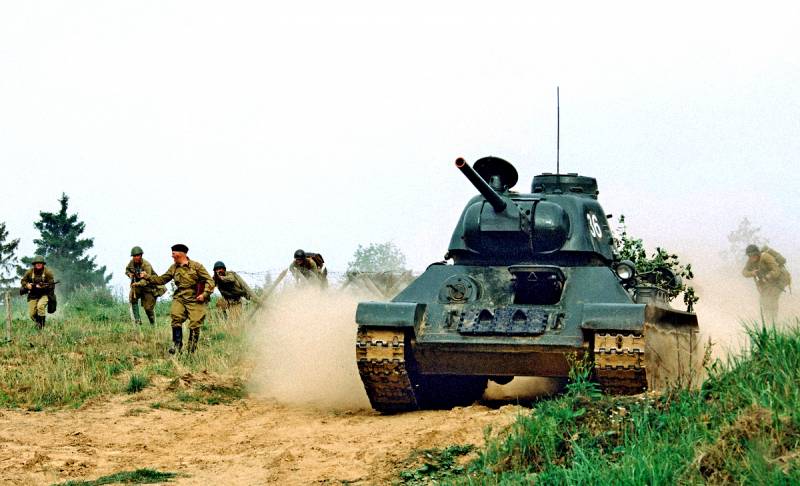The largest tank battles of all time: how it was
Tank troops to this day are one of the most important types of troops. And in World War II, all the most significant battles were tank.
Battle of Dubno
The idea of the battle of Prokhorovka on the Kursk Bulge as the largest tank battle in history has taken root in public consciousness. But this is not so. 3695 tanks were involved from the Soviet forces, and about 800 units of heavy armored vehicles from the Germans. The clash occurred on September 23, 1941, that is, at the very beginning of the Great Patriotic War, and the formal numerical superiority gave rise to some historians to speculate that the victory of the USSR near Dubno could turn the tide of the campaign.
Alas, I could not, and could not. The then military concept did not imply the possibility of tanks colliding head-on, head-on caterpillar armored vehicles were intended to break through defense and action against enemy communications. The problem of the Soviet armored forces was that most of the available armored vehicles belonged to the light class, protected only from bullets and fragments. In addition, Soviet tanks were generally not equipped with radio communication systems, unlike German ones.
As a result, German artillery and entrenched infantry calmly shot enemy tanks, which often attacked chaotically and without the support of infantry, which did not have time to keep up with them. Thanks to the courage of the Soviet military, despite the enormous losses, they even managed to liberate the city of Dubno for a while, forcing the Nazis to retreat. Unfortunately, the higher level of training of the German troops at that time led them to victory in that battle. However, the Soviet counterattack led to the failure of the pace of the “blitzkrieg”, which ultimately four years later led to the defeat of Nazi Germany.
Battle of El Alamein
It happened in Egypt in 1942, where the British grappled with the Rommel corps. The Germans planned to take control of the Suez Canal and push Turkey to switch to their side, taking Alexandria and Cairo. But the position of the Nazis was unenviable due to difficulties in supply. The British, who had military bases in Malta, began to sink transport ships with fuel, and Rommel’s tanks just stood up, losing the ability to deliver swift strikes and maneuver. In addition, Berlin transferred two divisions to the Eastern Front, weakening the strength of the Desert Fox. In total, about one and a half thousand tanks were involved in the battle near El Alamein.
The result was predictable. Incredible work, but the British troops under the leadership of Bernard Montgomery were able to grind Rommel’s static defense corps. Historians note the greater skill of the German commander, comparing him to a rapier swordsman, but for the above reasons, he could not fully use his capabilities against Montgomery, who simply “hit with a sledgehammer on the door.” Winston Churchill called the victory in two battles near El Alamein “the end of the beginning”, considering it a turning point during the Second World War.
The Battle of Prokhorovka
Despite the fact that the total number of tanks involved in the confrontation on the Kursk Bulge in 1943 was less than in the first two described, it is rightfully considered the most important tank battle in history. Initially, the Germans succeeded. This time the Nazis avoided a head-on collision. Due to the coordinated actions of enemy aircraft, anti-tank artillery and powerful cannons of heavy tanks, Soviet troops suffered heavy losses. In one day, June 12, 1943, 450 armored vehicles from 670 tanks and self-propelled guns were shot down, with the enemy losing 150 vehicles. Despite this, during the seven days of the confrontation near Prokhorovka, the Germans were unable to make a breakthrough and were forced to retreat. Also, they could not succeed in other parts of the Kursk Bulge and moved away.
The advance of the Nazis on the Kursk Bulge was their last major offensive operation, and it was unsuccessful.
The Battle of Kursk was the decisive battle of World War II. The official Soviet history of World War II rightly calls it a battle of historical significance.
- says the German historian Paul Karel. And it’s hard to disagree with him.

Information